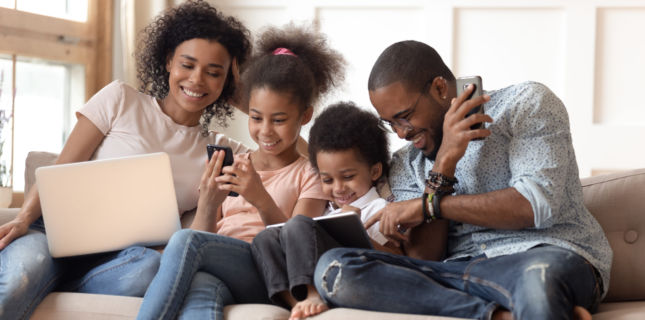
At Your Fingertips…
Recent Research on Blue Light
Consumers are understandably confused. Some blue light is good. Some is bad. Really bad. So how do you define the difference? And, what’s the best way to explain the correlation between device usage, screen time, and exposure to harmful blue light?
Tip: To avoid both sleep disruption and eye strain, keep iPhone or Android devices set on the night mode.
In previous posts, we’ve shared the strategies some of Shamir’s Peer Champions utilize in their offices. But what do the heavy hitters…sources like the National Institutes of Health, etc….have to say?
Here we share recommendations from several respected resources, along with bits of information from some of them. Clicking on the links at the end of each post can provide good reading for your staff and for the increasing numbers of patients who want to know more about the what and why behind blue light and vision.
SUPER SOURCES
Here are six insightful and reader-friendly resources on this increasingly important topic.
Q/A: Prevent Blindness does a great job of answering blue light questions. You can check them out at: https://preventblindness.org/blue-light-and-your-eyes/
CLOSE ENCOUNTERS: Sure, the sun creates the greatest exposure to blue light. But blue light from devices is an issue because of both the user’s proximity to the screen and the amount of time spent at it. More info from the National Institutes of Health (NIH) is available at: www.ncbi.nlm.nih.gov/pubmed/25535358
TV + TOTS: The Academy of Pediatrics (AAP) recommends no screen time for children under the age of two (except for platforms like Skype and FaceTime). What else? “From ages two to five, the doctors recommend one hour or less a day and urge parents to keep participating, and to choose only high-quality programming from sources such as PBS Kids and Sesame Workshop.” https://www.cmc-pa.com/toddlers/aap-adjusts-screen-time-guidelines-children/
FLIP A SWITCH: “A simple way to avoid both sleep disruption and eye strain is to turn night mode on our iPhone or Android devices,” suggests the Academy of Ophthalmology’s Raj K. Maturi, MD. Read more at: https://mymyopia.com/should-i-be-worried-about-the-blue-light-from-devices-affecting-my-kids-vision/
BLUE LIGHT GLASSES: According to just-released research conducted for The Vision Council by Morning Consult, 10% of adults now wear blue light glasses. Most wearers are in the 18-34 (14%) and 35-44 (13%) age groups of well-educated, urban consumers. For additional insight, go to: www.thevisioncouncil.org
COMPUTER VISION SYNDROME: It doesn’t take much, reports the AOA. “At greatest risk for developing CVS are those persons who spend two or more continuous hours at a computer or using a digital screen device every day.” In the era of COVID, that’s just about everyone. https://www.aoa.org/healthy-eyes/eye-and-vision-conditions/computer-vision-syndrome?sso=y
What recommendations do you make to patients about screen time…whether it’s their own digital devices or entertainment for the family?
Tell us about it and share in the conversation on Facebook here.
Comments are closed.







